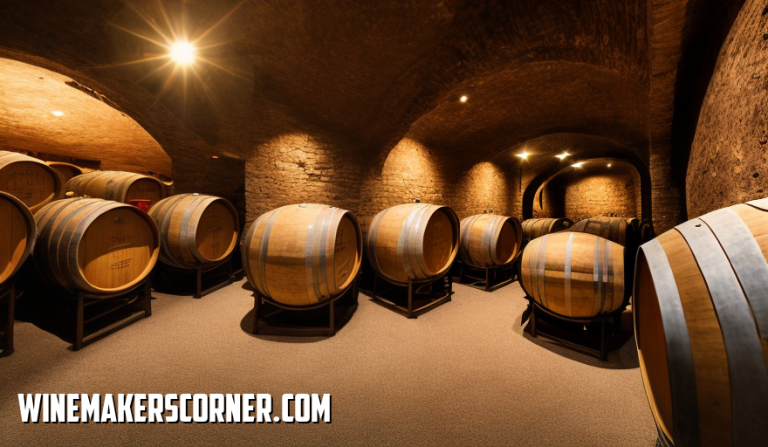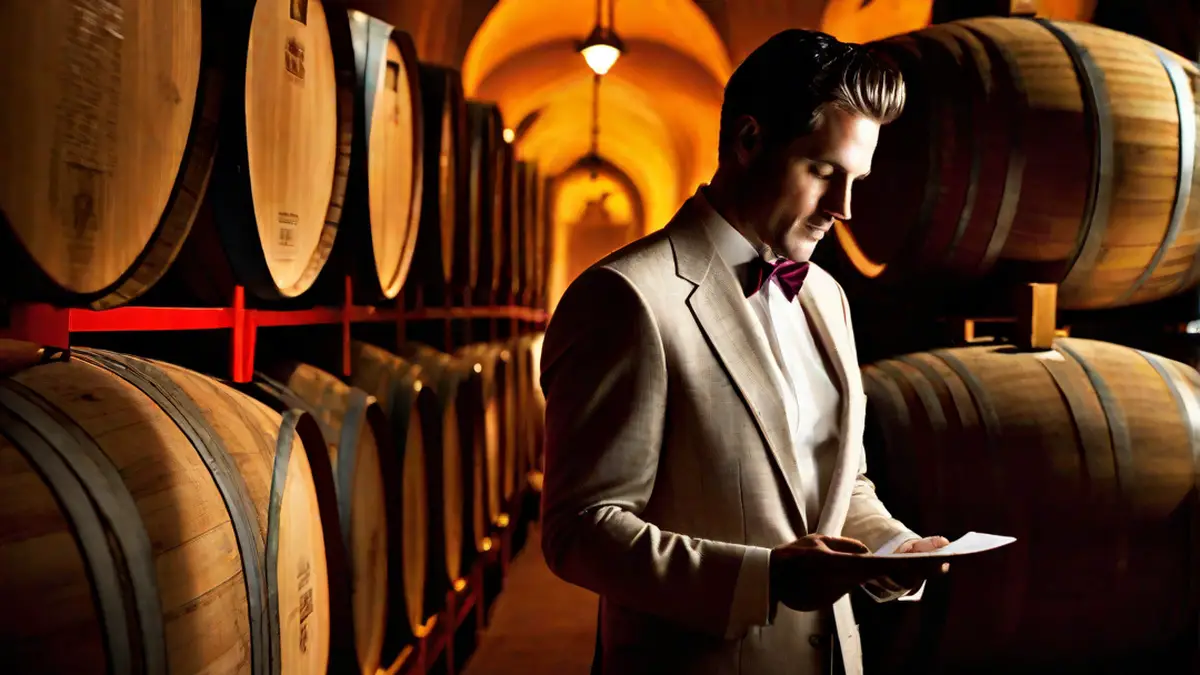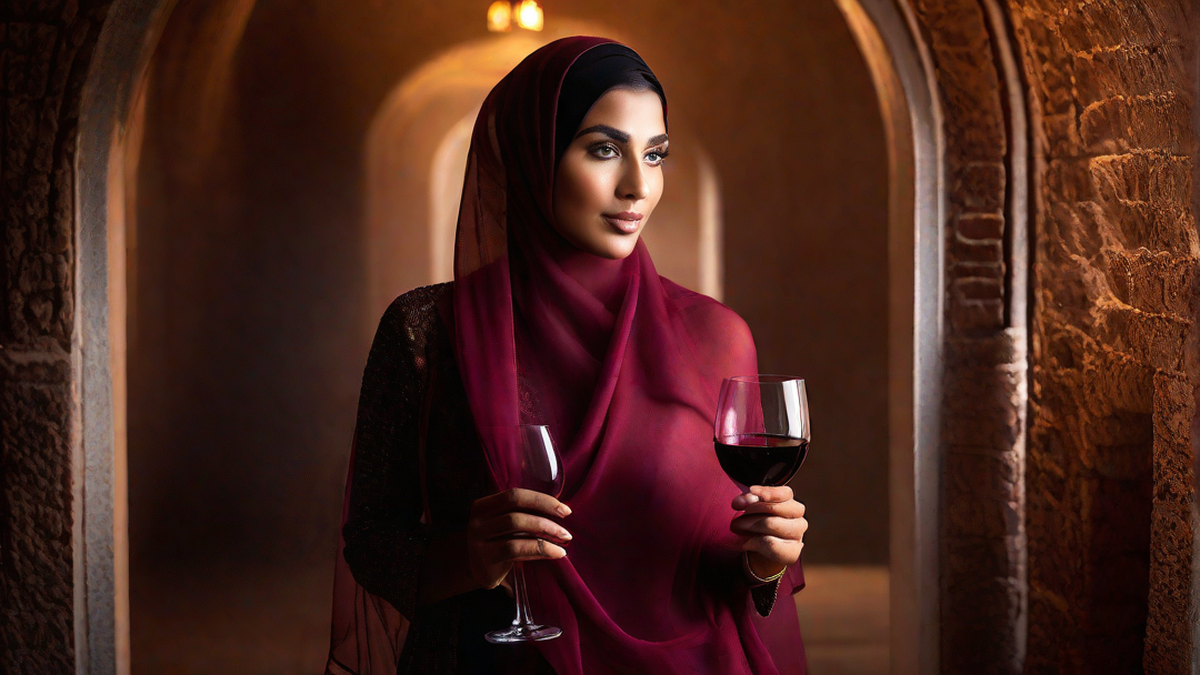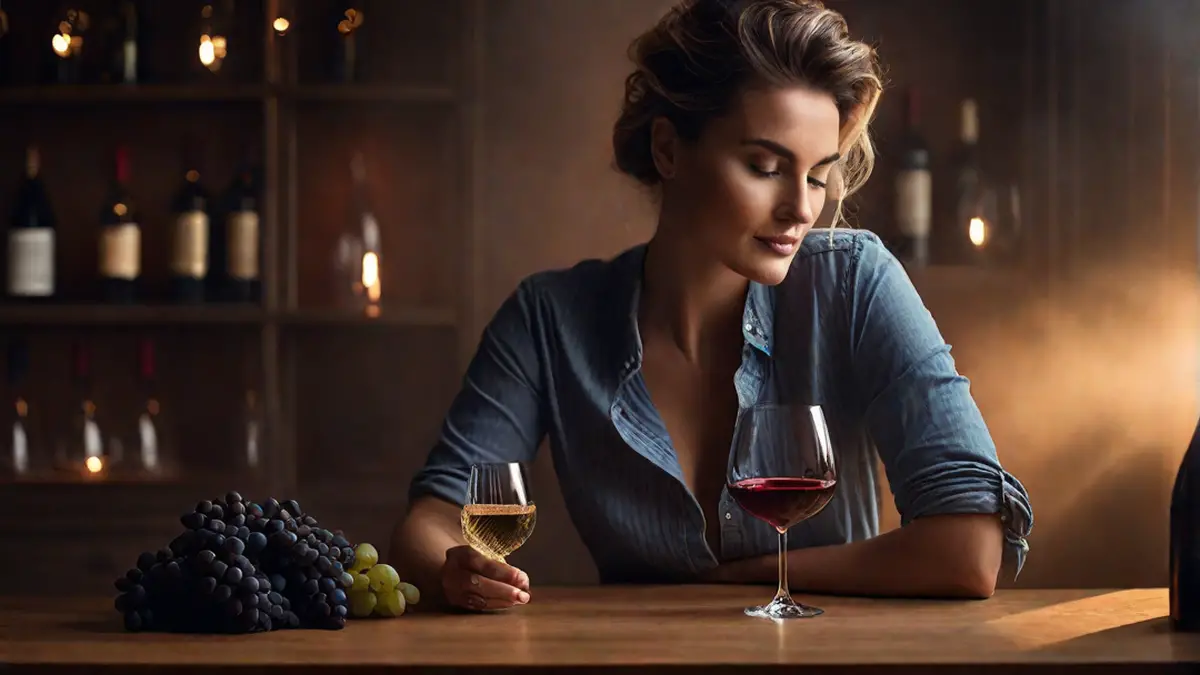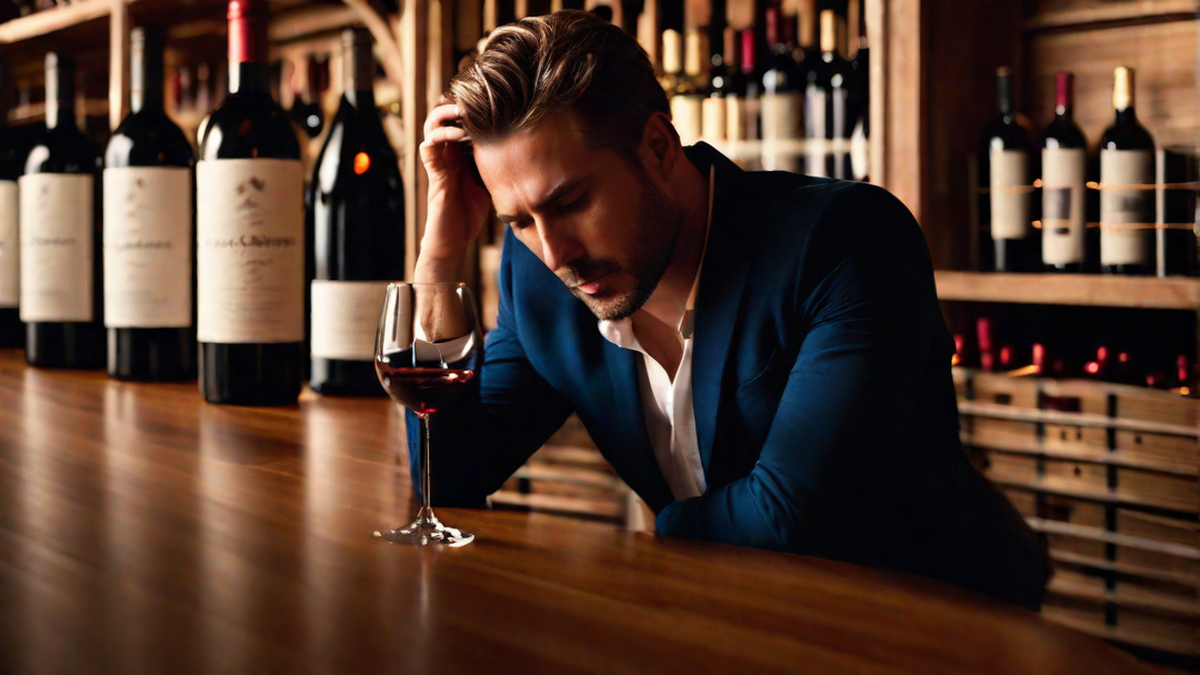Unlock the mystery of time. You’ll discover that at its core lies a bottle of wine. Ah wine! That enchanting elixir that dances on our taste buds tantalizes our senses and paints moments of joy.. What exactly makes this delightful potion so captivating? Is it the grapes themselves? The regions they originate from?. Perhaps the meticulous art of fermentation? Well indeed all these elements contribute their roles but lets not overlook one crucial character in this narrative. Time.
Like a caterpillar transforms into a butterfly wine too undergoes a fascinating metamorphosis as it ages. Similar, to a friend who grows more delightful with each passing year or a book that unveils new layers of depth with every reading; the allure of wine resides in its evolution and its graceful ability to mature over time. In this piece we will embark on a journey to comprehend how aging significantly impacts the creation of wine. So let your curiosity flow freely and immerse yourself in a realm where time doesn’t merely slip away; instead it ripens!
Understanding the Aging Process in Wine Making
The process of aging in wine making is an aspect of viticulture that holds immense significance. It involves transforming the product into a refined beverage and it goes beyond just the passage of time. This transformation relies on an interplay of various elements.
Typically wine aging takes place after fermentation. It is during this phase that wines develop their character. Wine makers carefully oversee this process to ensure the development of flavors.
The aging journey can be divided into two stages; secondary aging. The primary stage occurs in barrels, where contact with wood imparts flavors. Helps soften harsh tannins. Depending on the type of wine and desired taste profile this stage can last from months to several years.
After bottling secondary aging begins. Within the sealed bottle slow chemical reactions occur over time. Subtle changes take place over years or even decades resulting in a different wine compared to its younger version.
Aged wines often exhibit depth and complexity that younger ones lack. They may showcase hints of dried fruit, spices or earthiness alongside tannins and acidity levels.
However it’s important to note that not all wines benefit from aging. Some are best enjoyed when they are young since their fresh fruity flavors are at their peak intensity.
In conclusion comprehending the process of wine aging is crucial, for appreciating the diversity and richness that wine offers.
Time has an ability to elevate an ordinary grape juice into a captivating symphony of delightful flavors and enticing aromas.
Factors That Influence Wine Aging
Wine aging is a process that involves various factors coming together to create the delightful array of flavors we savor in well aged wines.
To begin with the type of grape used plays a role in determining how long a wine can age. Grapes like Cabernet Sauvignon and Nebbiolo with their tannin levels are known for their ability to age gracefully. On the hand grapes like Pinot Noir or Grenache which have lower tannin content may not age as well.
The conditions under which the grapes are harvested also contribute to a wines aging potential. A year with ideal weather conditions results in high quality grapes that possess the balance of acidity, sugar and flavor compounds necessary for aging.
The decisions made by winemakers during fermentation also have an impact on how long a wine can age. For example using oak barrels for maturation can enhance a wines ability to age by infusing it with additional tannins.
Proper storage conditions involving temperature stability and humidity levels are crucial for the aging of wines over time. Wines stored at, around 55°F (13°C) with a humidity of approximately 70% tend to age in the best possible way.
Lastly it’s important to acknowledge that oxygen exposure is both beneficial and risky when it comes to wine aging.The process of wine aging is essential for the development of intricate flavors. However it’s important to strike a balance as excessive exposure can result in oxidation and spoilage. By understanding these factors we gain an appreciation, for the intricate art of wine maturation.
The Role of Oak Barrels in Wine Aging
Oak barrels, a tool in the aging process of wine play a fascinating and multifaceted role. They go beyond being storage vessels as they significantly contribute to the flavor, aroma and texture of the wine.
The choice of oak tree species also plays a part in this process. French oaks offer flavors while American oaks tend to have a more assertive impact. Additionally the size of the barrel is important; larger barrels have contact with the wine and exert a lesser influence on its characteristics.
Toasting or charring the inside of the barrel is another factor to consider. This technique imparts hints of vanilla, spice or even smoky undertones to wines. The level of toasting can lead to flavors. A gentle toast might introduce coconut notes whereas a heavier toast could bring forth coffee nuances.
Furthermore oak barrels allow for controlled oxygen exposure in the wine. This gradual oxidation aids in softening tannins and enhancing complexity while resulting in a mouthfeel.
It is evident that oak barrels serve as more than containers for storing wine; they actively participate in shaping its character over time. However it’s worth noting that their use is not universal. Some winemakers choose steel tanks or alternative materials, like concrete or clay.
To sum up understanding how oak barrels influence the aging process of wine enables us to appreciate each bottles profile even further.
Chemical Changes During the Aging Process
Aging plays a role in the art of wine making. It’s a process that can elevate an ordinary bottle to something truly extraordinary.. What exactly happens during this period? It all comes down to the world of chemical changes.
The initial phase of aging involves oxidation, which occurs when wine comes into contact with air. This interaction causes the alcohol to undergo oxidation and convert into acid. Over time this reaction helps mellow out the harsh tannins found in red wines resulting in a more velvety and enjoyable drinking experience.
Moving on we have esterification, where acids and alcohols come together to form esters. These esters are responsible for the aromas that develop in aged wines. They bring forward fruity and floral notes that add layers of depth and complexity.
But wait there’s more! As wine continues to age another fascinating process called polymerization takes place. Tannin molecules bond together to create polymers that eventually settle as sediment.. What does this lead to? The outcome is a wine that is smoother and less puckering on the palate.
It doesn’t stop there! Wine also goes through hydrolysis, where complex molecules break down into ones. For instance glycosides divide into sugars and aromatic compounds enhancing both the sweetness and aroma of the wine.
However it’s essential to note that aging isn’t suitable, for every bottle there! Some wines are best enjoyed when they’re young and vibrant while others require time to reach their potential.
Aging can be compared to a symphony of chemical reactions occurring within every bottle of wine. Each reaction adds its unique touch creating a harmonious blend of flavors that wine enthusiasts from, around the globe truly appreciate.
Impact of Aging on Wine Flavor and Aroma
Aging wine is an art that combines time chemistry and the wonders of nature to elevate a good wine to extraordinary heights. The process isn’t simply about making wine older; it’s about unlocking its potential.
The enchantment of aging lies in its impact on flavor and aroma. As wine matures intricate chemical reactions take place involving the sugars, acids and phenolic compounds within the liquid. These reactions have the power to transform the taste and scent of the wine in ways.
Lets take wines as an example. In their youth they possess an tannic character with vibrant fruit flavors. However as time passes these qualities gradually. Harmonize. The result? A symphony of flavors where hints of figs, prunes or even tobacco may emerge.
White wines also undergo captivating transformations during aging. Initial notes of apple or citrus can evolve into deeper nuances like honey or nuts. Even their color subtly changes over time.
Aging not impacts taste but also influences aroma profoundly. As wines age gracefully they develop what connoisseurs call aromas – earthy scents reminiscent of mushrooms or leather that add layers of complexity to the sensory experience.
However there is no one size fits all formula for aging; it varies from one wine to another based on factors such as grape variety and storage conditions, among others.
So the next time you take a sip of an aged wine and delight in its intricate flavors just remember. Each taste and scent that dances on your palate is the result of years if not decades of careful craftsmanship! It serves as a testament, to the virtue of patience rewarded and the value of time well invested.
The Art of Patience: Time and Wine Quality
Making wine is an art form. It requires patience and a delicate dance with time. One key element in this process is the aging phase, which plays a role. So why is aging so important? Lets take a look.
The magic begins after fermentation. Once the wine is freshly made it finds its home in barrels or tanks where the aging journey commences. But this isn’t about storage; it’s about transformation.
During the aging process the flavor and aroma profile of the wine undergoes changes. Tannins compounds found in grape skins and seeds become softer over time. The outcome? A smoother. Reduced harshness.
Furthermore as time passes secondary and tertiary flavors develop in the wine. Initially young wines showcase flavors like fruity or floral notes derived directly from the grapes themselves. However as they age they acquire complexities from fermentation or the vessels used for aging—these are known as secondary flavors.
With periods of aging come tertiary flavors. These are often described as savory notes reminiscent of leather or tobacco.
Nevertheless not all wines benefit from long term aging. Some are crafted to be enjoyed when they’re young and vibrant with their primary flavors still intact.
Thus winemakers skillfully navigate a balance, between time and taste to create remarkable wines.
In summary the process of aging wine goes beyond waiting. It involves the progression and enhancement of the wines character as time passes.
How Different Wines Age: Red vs White
Aging wine is truly an art that captures the essence of time and patience. It is a process in winemaking with distinct variations between red and white wines.
Red wines, known for their robustness owe their aging potential to their tannin levels. Tannins act as preservatives prolonging the lifespan of the wine. As they gradually soften over time they contribute to the development of flavors and captivating aromas.
Lets consider Cabernet Sauvignon as an example. This bodied red wine possesses exceptional aging capabilities due to its abundant tannins. With maturation it acquires layers of nuanced flavors. Notes transform into hints of cedar or tobacco.
In contrast white wines usually have a potential for aging. Their limited tannin content accelerates their maturation process. However this doesn’t imply that they cannot age gracefully.
Take Chardonnay as a white grape variety for instance. In its state it exhibits fresh fruit flavors like apple or pear.. When aged in oak barrels over time it reveals delightful characteristics such as toasted nut or honey undertones that deepen its complexity.
Nevertheless there are exceptions to these guidelines. Some light bodied reds like Pinot Noir may not experience substantial improvements from extended aging compared to certain full bodied whites such, as White Burgundy.
Keep in mind however that not every wine is meant to be aged. Some are at their best when enjoyed while young highlighting their lively and expressive fruit flavors.
To sum up aging plays a role in winemaking. The real fascination lies in how different types of wines age. The enchanting contrast, between reds and whites.
Choosing the Right Age for Consumption
Determining the age for consuming wine goes beyond mere preference. It involves a blend of art, tradition, science and personal taste. Unlike beverages wine is a living entity that undergoes a transformative journey within the confines of its bottle resulting in an intensified flavor profile and heightened complexity.
For many the process of aging wine may seem mysterious. However it is crucial to recognize that not all wines benefit from maturation. Most contemporary wines are crafted for enjoyment or should be savored within a few years of their production.
The key lies in comprehending the nature of the wine at hand. Bodied reds such as Cabernet Sauvignon or Rioja possess robust tannins that mellow with time enriching their flavors. Conversely bodied whites like Pinot Grigio are best relished when young to fully experience their vibrant acidity and fresh fruitiness.
So how does one make this decision? A general guideline involves considering factors such as grape variety, region of origin and vintage year. Wines originating from vintages or renowned winemaking regions tend to exhibit superior potential for aging.
However personal preference also plays a role in this endeavor. Some individuals delight, in the fruit flavors found in youthful wines while others derive pleasure from the intricate nuances that develop over time.
In the end the decision of when to consume wine depends on your taste and level of patience. Aging wine isn’t a guaranteed method, for improvement; rather it’s a voyage of exploration where you get to know your preferences.
